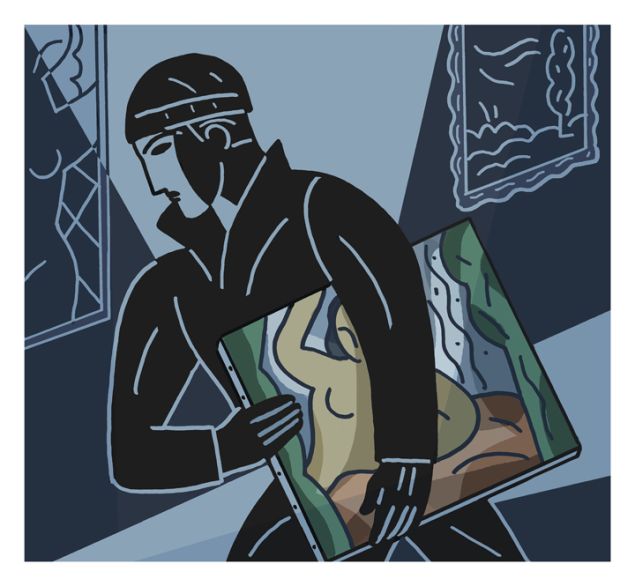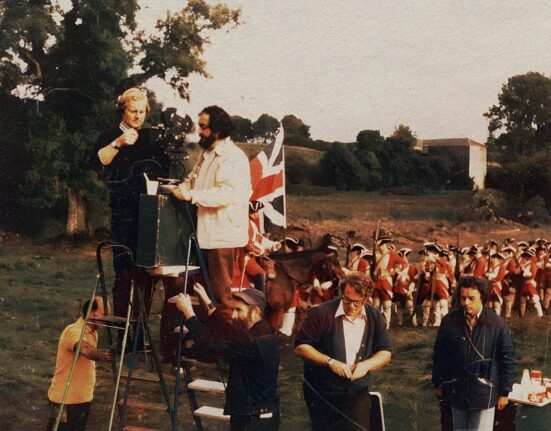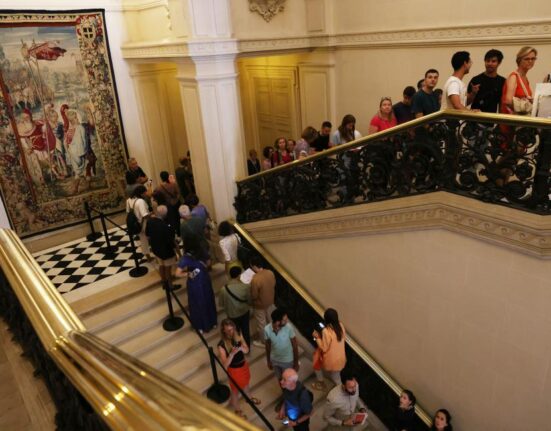A work of art has been stolen from your home, and your first question likely has a lot to do with who might help you get it back. The police? The FBI? Your insurance carrier? Interpol? The Art Loss Register? A private detective? The answer is that all of these entities may eventually be involved in a search and recovery effort, but the very first step is contacting the group least likely to be effective: the local police.


A note of caution: there is a “very low recovery rate” for stolen artworks, according to William Fleischer, president of Bernard Fleischer & Sons, an insurance brokerage firm in New York City. On the positive side, he told Observer, “art theft does happen, but not as often as one would think. Most claims involve breakage and fire, with a sprinkling of lost items in transit.”
It’s a double-edged sword, in some respects. Your artworks are statistically unlikely to be stolen, which means that expertise in art recovery is relatively rare. Very few police officers have the knowledge or training to investigate stolen art, antiques and other collectibles, but having a police report is required for insurance claims or any involvement by the Federal Bureau of Investigation. The FBI, which launched its National Stolen Art File app earlier this year, typically takes an interest only if the theft can be linked to organized crime, stolen artwork crosses state lines or a missing piece is worth more than $50,000.
Local police departments “are not obligated to contact the FBI,” explains Robert Wittman, an art security consultant in Chester Heights, Pennsylvania who was formerly an FBI agent specializing in art theft cases. He added that it would be the FBI that contacts Interpol, the European organization that works with law enforcement agencies around the world to combat various types of crimes, including art theft.
SEE ALSO: An Art Detective Had a Trash-Bag-Covered Picasso Painting Delivered to His Doorstep Like Takeout
However, the victims of art theft can contact the London-based Art Loss Register themselves to report missing artwork by submitting information like size, title, name of artist, price information and photographs. The Art Loss Register doesn’t pursue criminals but does maintain the world’s largest database of artworks reported stolen, and that database is regularly checked by collectors, art dealers, auction houses, insurance companies and law enforcement agencies when an object is offered up for sale. A domestic listing of stolen cultural property is maintained by the International Foundation for Art Research (IFAR), which is located in Manhattan, and victims may also contact IFAR directly.
Wittman also recommended that victims of art theft should reach out to the galleries where artworks were purchased—particularly if a gallery specializes in that type of art or works by the artist. “They are likely to be aware if these kinds of pieces show up somewhere,” he explained.
Still, don’t hold your breath. The police and the FBI have other, more consequential crimes to solve. “A month after contacting the police, you might want to reach out to an art detective,” Wittman said. “We do the stuff that the police won’t do.”
What that ‘stuff’ is doesn’t sound very cloak-and-dagger. Private art detectives contact dealers and auction houses that sell the type of material that was stolen; they check lists of stolen cultural property; and then they wait for something to turn up. It likely comes as no surprise that Wittman’s principal business is helping homeowners and museums proactively secure their premises so that art theft doesn’t happen in the first place.
Arthur Brand, a Dutch art crime investigator, noted that he is usually contacted by victims anywhere between two and forty years after a theft occurred, and one of the first steps he takes is to “ask permission from the police” to launch an investigation. “You don’t want to mess around with an active police investigation, so I take the job after it has gone cold,” he told Observer.


Treating recovery work as a side gig seems to be the norm in the art theft world, and Brand’s case is no exception. He has tracked down stolen artworks by Van Gogh, Picasso and Salvador Dali, as well as culturally relevant objects, only getting a fee when a recovery is made. “In eighty percent of cases, I don’t get paid,” he revealed, adding that about half his work involves helping people buy and sell artworks—legitimately, of course.
There is no association of private art investigators, and victims of art theft often have to rely on search engine results to find someone who can help. The head of one New Paltz, New York, private investigation firm who asked not to be identified noted that “for a variety of reasons, law enforcement officers may be unable or reluctant to refer victims to service providers in the private sector,” although he thought that the NYPD or FBI might recommend contacting a retired detective or special agent who works in private practice. Additionally, lawyers who specialize in fine art matters “might be able to recommend an investigator.”
Contrary to how Brand operates, private investigators generally work on a retainer basis, charging by the hour, and fees for billable hours and expenses rack up regardless of the outcome of an investigation.
While most art is stolen from museums, rather than from private homes, private art collectors shouldn’t be complacent. In January of 2023, six people were arrested for the 2012 theft of a Porsche, several bottles of wine, designer wristwatches and artworks including paintings by Jasper Johns, Piet Mondrian, Frank Stella, Franz Kline and Philip Guston from the Los Angeles home of financier Jeffrey Gundlach The paintings were recovered in two weeks from an automobile stereo shop in Pasadena. Gundlach had offered a reward of up to $1.7 million for the return of his artworks, which proved helpful in tracking down the paintings.
Claire Marmion, an art consultant for the insurance industry and founder of the Haven Art Group, noted that both homeowners and insurance carriers offer rewards for the safe return of stolen artworks, although her experience is that rewards are “helpful in catching the perpetrators, less helpful in recovering the art.” In terms of whether or not to offer a reward, Steven Pincus, senior managing director of Risk Strategies, an insurance brokerage firm based in Boston, Massachusetts, suggested that “this should be guided by the insurance company in connection with law enforcement.” The amount of the reward generally reflects a percentage of the value of missing art but could be considerably higher if the piece has significant personal or sentimental value to its owner. The amount of insured loss is also a factor.
In 2006, a 1778 painting by Francisco de Goya that was stolen from a fine art transorter van carrying it from a museum in Toledo, Ohio to the Guggenheim Museum in New York City was recovered, in no small part thanks to the $50,000 reward offered by the insurance company whose policy covered the artwork. A lawyer for the thief contacted authorities, who took possession of the unharmed artwork in time for its exhibition.
As Arthur Brand said, “Money talks.”








